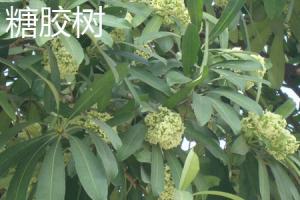Introduction
Spider plants are one of the most popular indoor plants due to their easy care and ability to purify the air. However, to ensure the health and growth of your spider plant, it is important to select the appropriate pot size that will accommodate its needs. In this article, we will discuss the proper pot size for spider plants.
Understanding the Growth Rate of Spider Plants
Spider plants are known for their fast growth rate, producing numerous offshoots or spiderettes. As a result, choosing the right pot size is essential to accommodate this rapid growth. A pot that is too small can restrict the plant's growth, resulting in stunted roots and poor productivity. Conversely, a pot that is too big will make it difficult for the plant to absorb water, leading to root rot and other diseases.
Selecting the Right Pot Size
When selecting a pot size for your spider plant, consider the size of the plant's root system. Choose a pot that is 2-4 inches wider in diameter and depth than the plant's root ball. This ensures that the plant will have sufficient room for root growth while also allowing ample space for the spiderettes to emerge.
If you are propagating spider plants from spiderettes, choose a small pot with a diameter of 4-6 inches. This size pot will provide enough space for the root system to grow while also promoting quick establishment.
Benefits of Choosing the Right Pot Size
Choosing the right pot size for your spider plant offers many benefits. A properly sized pot promotes healthy root growth and the development of new spiderettes. It also reduces the likelihood of overwatering or under watering the plant, ensuring consistent moisture levels. Adequate pot size also prevents the plant from becoming root bound, which can lead to stunted growth and poor productivity over time.
Caring for Spider Plants
In addition to choosing the appropriate pot size for your spider plant, it is important to provide it with proper care. Spider plants thrive in well-draining soil that is moist but not waterlogged. They prefer indirect sunlight and can tolerate low light conditions. Be sure to water the plant regularly, allowing the soil to dry out slightly before re-watering. Spider plants are also susceptible to pests such as spider mites and mealybugs, so be sure to monitor the plant for signs of infestation and address accordingly.
Conclusion
The size of the pot you choose for your spider plant will have a significant impact on its growth, productivity, and overall health. When selecting a pot, choose one that is 2-4 inches wider in diameter and depth than the plant's root ball. Additionally, provide your spider plant with proper care to ensure it thrives in its new home. Following these tips will ensure a happy and healthy spider plant and a beautiful addition to your indoor garden.

 how many times do yo...
how many times do yo... how many planted tre...
how many planted tre... how many pine trees ...
how many pine trees ... how many pecan trees...
how many pecan trees... how many plants comp...
how many plants comp... how many plants can ...
how many plants can ... how many plants and ...
how many plants and ... how many pepper plan...
how many pepper plan...































